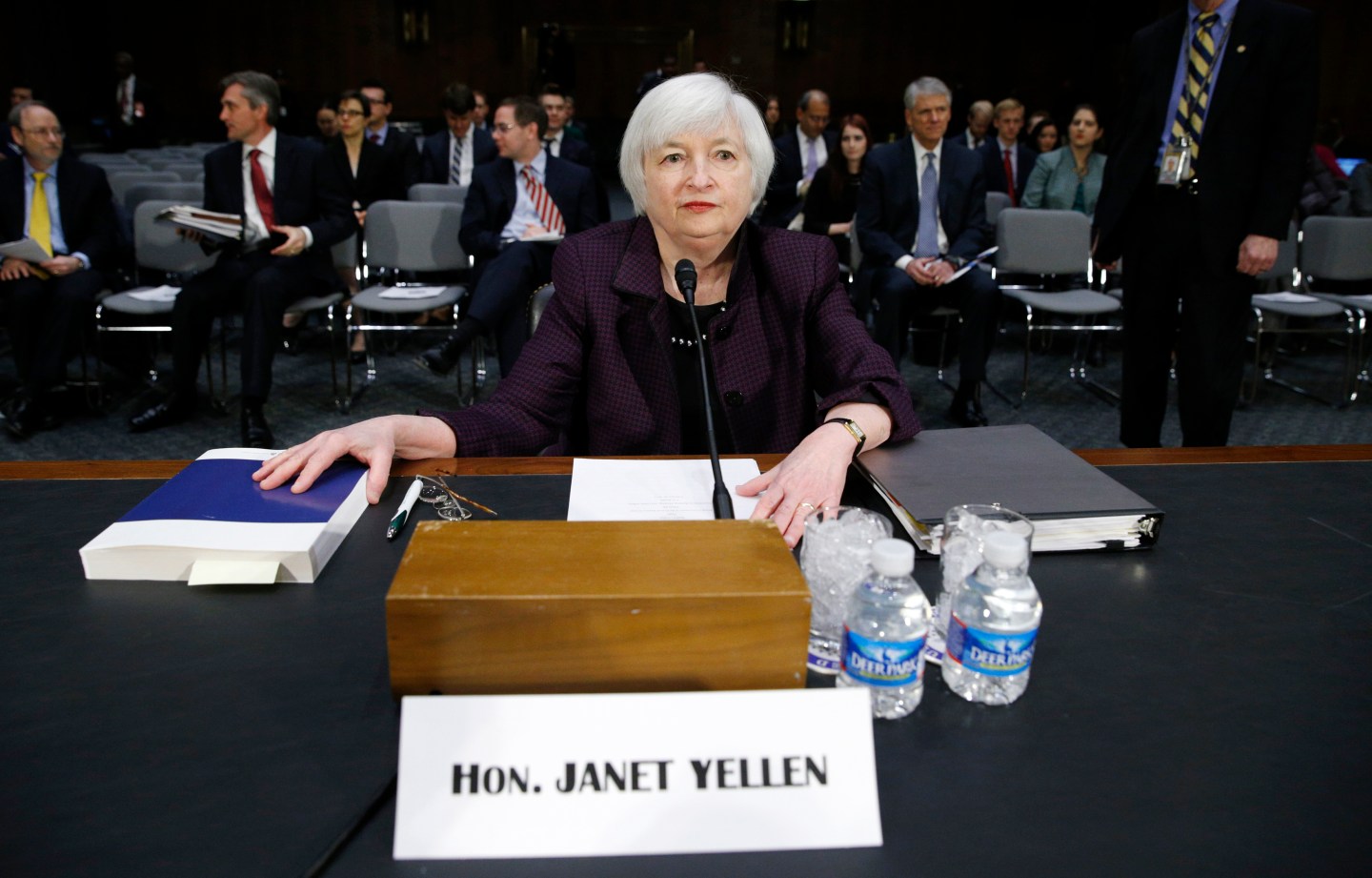Even as China’s stock market continues to reel, and Europe still searches for a way to keep its monetary union intact, central bankers remain confident that the American economy is on the upswing.
Policy makers on the Federal Open Market Committee (FOMC) have made it clear in recent speeches and in minutes from previous meetings that the board is readyto raise interest rates as soon as its next meeting, which will take place on September 17.
Critics of the Fed are wondering, however, why the central bank is so keen to raise rates now. Sure, the unemployment rate has declined significantly since the recovery began, but much of that is due to the falling labor-force participation rate. Meanwhile, economic growth has hovered just north of a 2% annually, which is okay, but disappointing for an economy coming out of one of the worst recessions in history. As Jim Bianco of Bianco research wrote in a note to clients earlier this month, the Fed launched its most aggressive bond buying program in 2012, when the economy was growing at the same rate it’s growing now, adding roughly the same number of jobs per month, with inflation running about where it is today. He writes:
We do not believe the economy has changed enough since 2012 to warrant a completely different outlook from the Fed. If they supported open-ended QE in 2012, the economy should dictate the same policy now. We believe the Fed wants to raise rates for other reasons—ones they cannot say out loud.
Those other reasons are what the Fed terms “financial stability.” They understand QE distorts markets, so they want to normalize before things get out of hand.
Bianco’s criticism is a fair representation of the skepticism shown toward the central bank across the political spectrum. Even those who don’t believe that low interest rates and aggressive bond buying are “distorting” the economy and markets are concerned about the Fed’s optimistic view of the economy.
But these critics have overlooked the forward-looking nature of the Fed’s analysis. It’s the Fed’s mandate to promote a stable currency (2% inflation per year) and full employment (unemployment between 5.2% and 5.5% now, but this is more of a moving target). The problem is that the Fed can’t wait for inflation to pick up, it has to act before inflation gets out of hand. That’s why the Fed is intent to raise rates now even though the economy—when you look at GDP growth and inflation—looks a lot like it did a few years ago.
One key piece of evidence that inflation is about to pick up is wage growth. Gad Levanon, an economist at The Conference Board, published an analysis Monday of different measures of wage growth, finding that the metrics most closely associated with labor market tightness and inflation have picked up significantly in recent quarters. And because the final price of many products that Americans buy is made up mostly of the labor costs associated with production, wages are a very important driving factor of inflation. The evidence of higher wages that the Fed is seeing right now suggests higher inflation down the road, a situation the Fed wants to avoid.
Critics are right that the Fed has been overoptimistic in its estimates of inflation and economic growth. But they are missing are the real signs of wage growth presenting themselves today, which we haven’t seen since the recovery began.
